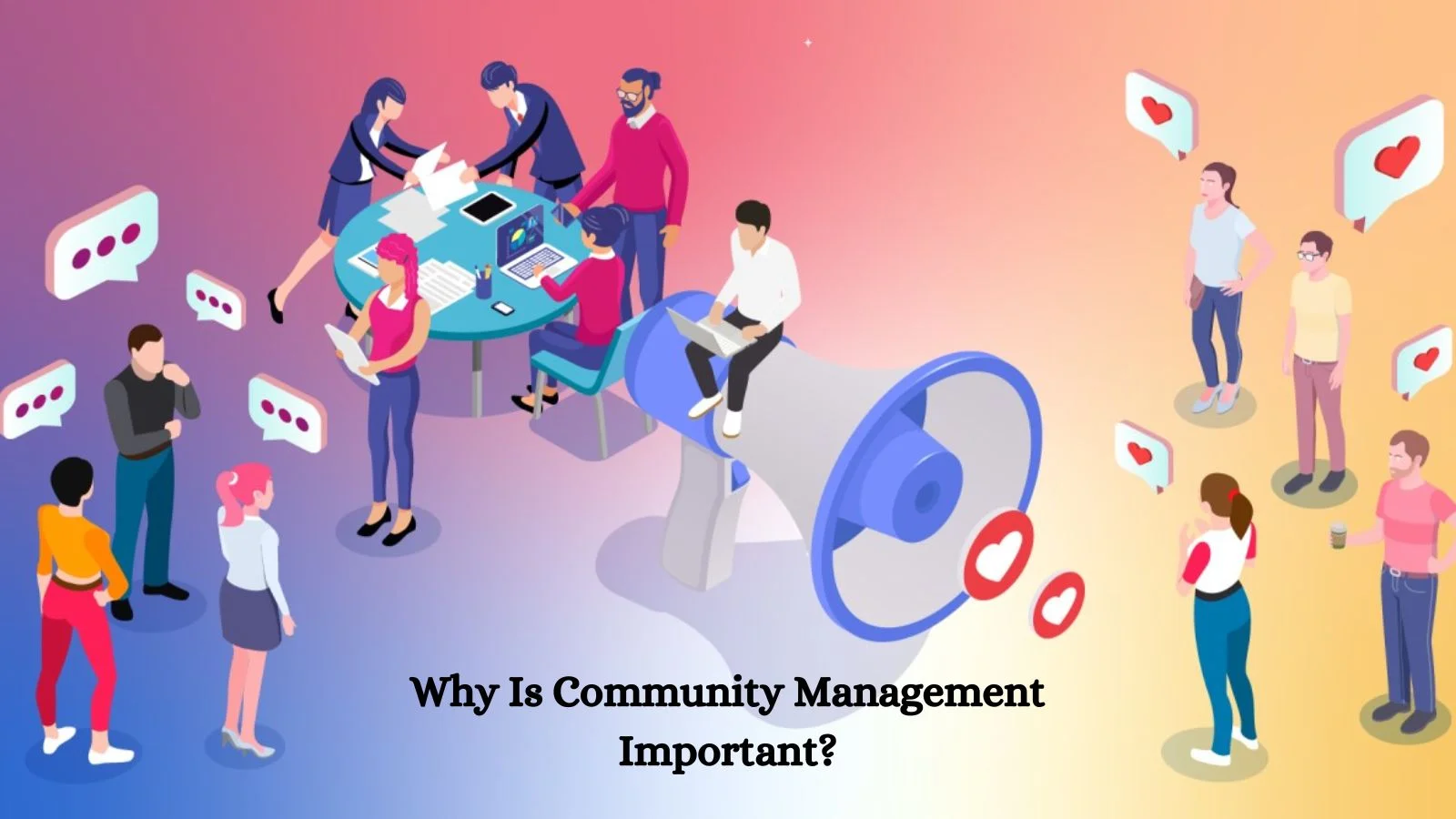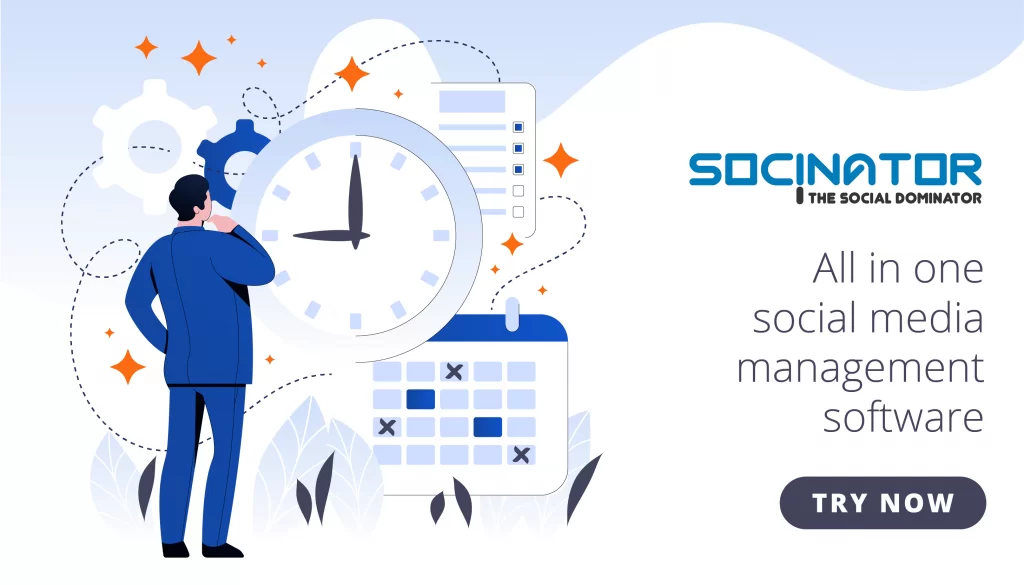In today’s interconnected landscape, building connections and fostering communities has become more accessible than ever.
However, ensuring these communities grow requires a unique set of resources. Welcome to the comprehensive guide to community management tools for 2024 on managing vibrant communities.
This guide uncovers the essential tools necessary for nurturing, expanding, and maintaining these dynamic groups. Whether you’re an experienced community manager or just starting, this roadmap explores the latest tools shaping our online connections.
Join us as we explore the tools powering these communities and revolutionizing online engagement approaches.
Hit ‘Play’ Button & Tune Into The Blog!
What Is Community Management?
Community management incorporates the art of nurturing, guiding, and fostering connections among individuals with shared interests or goals. It revolves around creating an inclusive space where members feel engaged, supported, and valued.
This practice reaches various domains, including online forums, social platforms, customer communities, and physical gatherings. Responsibilities encompass- facilitation of discussions, setting and enforcing community guidelines, curating relevant content,
encouraging participation, resolving conflicts, and fostering growth. It requires a blend of interpersonal skills, strategic planning, and the adept use of community management tools to cultivate an environment where members can interact, learn, and collaborate.
Ultimately, effective community management aims to build a sense of belonging and fellowship among members while steering the community toward its objectives.
Why Is Community Management Important?
 Community management holds significant importance for several reasons:
Community management holds significant importance for several reasons:
Engagement and Retention: Effective community management tools fosters engagement, keeping members active and invested. This engagement often leads to better retention rates as members feel valued and connected.
Support and Collaboration: Social media Communities offer spaces for individuals to seek help, share experiences, and collaborate. Strong community management ensures these interactions are positive and fruitful.
Brand Loyalty and Advocacy: For businesses, well-managed communities lead to increased brand loyalty. Satisfied and engaged customers within communities often become brand advocates, promoting products or services through word-of-mouth.
Feedback and Improvement: Communities provide valuable feedback channels. Management facilitates this feedback loop, enabling businesses or organizations to understand user needs and make improvements accordingly.
Knowledge Sharing: Communities are hubs of collective knowledge. Efficient community management tools ensure that insights and information flow freely among members, fostering continuous learning.
Conflict Resolution and Moderation: Managing conflicts and maintaining a respectful environment is crucial. Skilled community management can address issues swiftly, preventing negativity from affecting the community atmosphere.
Business Growth and Innovation: For businesses, communities can drive innovation, generate ideas, and even lead to new product developments by tapping into the collective wisdom of its members.
Community management tools play a pivotal role in cultivating thriving, supportive environments that benefit individuals, businesses, and organizations alike by fostering engagement, support, and growth.
What The Best Community Management Tools Offer?
Finding the right community management tools is crucial for social media or community managers -to efficiently handle diverse tasks from a unified platform. However, choosing the ideal tool involves considering several essential functions it should offer.
Centralized Organization:
A comprehensive community management tools should centralize interactions from multiple social platforms, allowing replies, attachments, and task assignments from one location. It should also enable organizing and distributing messages among team members, providing a search function for quick message retrieval, and offering tagging and filtering options for efficient organization. Moreover, the inclusion of internal notes fosters collaborative teamwork.
Automation Functions:
Time-saving automation features, such as template creation and use, streamline repetitive responses to common queries. Automation functions in tools like Socinator simplify repetitive tasks effectively.
Socinator advanced automation capabilities, such as setting up helpers or automated responses to specific actions, notably reduce- manual workload. This tool empowers community managers by enhancing efficiency, ensuring timely responses, and optimizing workflow within its centralized platform.
Allow Outside Collaboration:
Effective community management tools should facilitate collaboration beyond the core team without requiring every team member to have access to the tool. Seamless communication features enable collaboration with individuals outside the community management or customer service teams, allowing for efficient information sharing and problem-solving.
AI Integration:
Integration of AI technology within the tool can revolutionize community management. For instance, tools like Socinator seamlessly integrate AI capabilities to empower managers. AI-generated responses for common queries and AI-assisted improvements in initial responses empower managers to handle interactions more effectively, ensuring high-quality responses.
Performance Reporting:
Robust reporting features are essential for tracking and analyzing community activity. Performance reporting functionalities should include insights into peak activity times, response times, and overall engagement metrics, aiding in optimizing team allocation and assessing the effectiveness of community management efforts.
A comprehensive community management tool, Socinator must encompass these essential functions to efficiently manage diverse interactions across multiple social media platforms while fostering collaboration, automating tasks, leveraging AI capabilities, and providing insights for continual improvement.
Best Community Management Software To Use In 2024
 Socinator is a robust social media automation tool designed to streamline and enhance various aspects of social media management. It offers a wide range of features that aid in automating tasks, increasing efficiency, and improving engagement across multiple social media platforms.
Socinator is a robust social media automation tool designed to streamline and enhance various aspects of social media management. It offers a wide range of features that aid in automating tasks, increasing efficiency, and improving engagement across multiple social media platforms.
Here are the key features of Socinator for social media automation:
Post Scheduling: Allows the scheduling of posts across multiple social media platforms, ensuring consistent content distribution.
Engagement Automation: Automates interactions with- audiences through likes, comments, follows, and messages, boosting engagement.
Response Automation: Facilitates automated responses to messages or comments based on predefined criteria, improving responsiveness.
Analytics and Insights: Provides detailed analytics and performance insights, aiding in tracking engagement, reach, and follower growth.
Multi-Platform Support: Works seamlessly across various social media channels like Facebook, Instagram, Twitter, LinkedIn, YouTube, and more.
Customizable Automation: Offers customizable automation settings, allowing users to tailor actions to specific audience behaviors or timeframes for enhanced targeting and efficiency.
Socinator, online management software serves as an all-in-one solution for social media automation, empowering businesses, marketers, and influencers to efficiently manage and grow their online presence across various social platforms.
Read More
Social Media Communities- Meaning, Types, How To Build, & More!
7 Proven Strategies To Build Your Social Media Community
Best 9 Strategies For Community Growth On Social Media
How To Create A Community Management Strategy?
Creating a community management tools strategy involves several key steps to effectively engage, nurture, and grow a community. Here’s a structured approach:
Define Goals and Objectives:
Identify Purpose: Understand why the community exists and what you aim to achieve—whether it’s brand advocacy, customer support, or knowledge sharing.
Set Clear Objectives: Establish specific, measurable goals aligned with the community’s purpose. Examples include increasing engagement metrics, driving sales, or fostering brand loyalty.
Know Your Audience:
Audience Research: Understand your audience’s demographics, interests, behaviors, and pain points. Use surveys, analytics, and social listening tools to gather insights.
Persona Development: Create audience personas to tailor content, engagement, and strategies to meet their needs and preferences.
Choose the Right Platforms:
Platform Selection: Identify where your audience spends time online. Choose places that match your community goals and where tools like Socinator, a handy social media helper, can help connect and manage interactions smoothly. Pick platforms where Socinator’s features fit your goals, making it easier to engage with your audience
Establish Community Guidelines:
Define Rules: Develop clear- guidelines outlining acceptable behavior, posting policies, and moderation rules to maintain a positive environment.
Communicate Guidelines: Ensure all community members understand and agree to these guidelines. Regularly reinforce them to maintain a healthy community culture.
Content and Engagement Strategy:
Content Planning: Develop a content strategy that aligns with audience interests and community goals. Plan diverse content types, schedules, and themes.
Engagement Tactics: Implement engagement tactics like polls, discussions, live sessions, and contests to encourage interaction and participation.
Allocate Resources:
Team Structure: Define roles and responsibilities within your community management team. Assign community managers, moderators, and content creators.
Tools and Resources: Invest in tools like Socinator for streamlined community management, analytics, content creation, and scheduling efficiency and optimization.
Foster Engagement and Growth:
Initiate Engagement: Kickstart discussions, reply promptly to queries, and encourage member-generated content to boost engagement.
Encourage Advocacy: Foster a sense of belonging, reward active participation, and empower members to advocate for the community.
Measure and Adapt:
Performance Metrics: Regularly track key metrics like engagement rates, growth, sentiment analysis, and conversions.
Iterate and Improve: Analyze data to identify what works and what needs improvement. Adjust strategies based on insights to optimize community growth and engagement.
Continuous Evaluation:
Feedback Loops: Request feedback from community members regularly to understand their needs and preferences.
Iterative Improvement: Use feedback to continuously refine your strategies, content, and community management approaches.
The above strategies help you to build an engaging social media community. It entails planning, active engagement, continuous refinement, and a commitment to nurturing a thriving community in line with its goals and objectives. Tools like Socinator can aid in streamlining these efforts, ensuring smoother management and fostering a vibrant community that resonates with its intended aims.
Start Building Your Community
By integrating a community management tools strategy into your company, you establish- a secure haven for collaboration, feedback, and learning among customers, fans, employees, and followers.
This approach, strengthened by tools like Socinator, fosters brand loyalty, drives sales, and humanizes your brand, forging deeper connections with your audience. Start by exploring community management options, come up with a strategy, and assess whether incorporating Socinator can amplify your efforts.
Here’s to building and boosting communities that grow, engage, and succeed!






